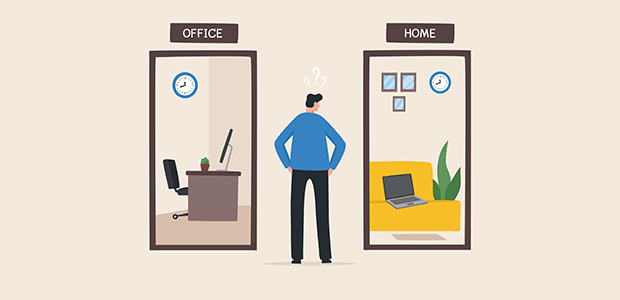
Employers adapt health & wellbeing support to hybrid working patterns
Employers are adapting the health and wellbeing support they offer to employees in light of new remote and hybrid working patterns, according to new research1 from GRiD, the industry body for the group risk sector.
A third (30%) of organisations where some or all staff now work remotely or in a hybrid model have made it easier for staff to access existing support and benefits remotely e.g. via apps and online. Also in response to the remote work/hybrid working model, 28% have introduced new health and wellbeing benefits to support employees e.g. for their mental health and physical health. Just over a fifth (22%) have increased support that can be accessed remotely e.g. virtual GP appointments, and the same number have organised more social events.
Katharine Moxham, spokesperson for GRiD, said: “It’s good to see that some employers are making adjustments to reflect that their employees are working remotely or have adopted a hybrid approach to their working location, but this new world is here to stay, and we’d like to see more employers stepping up. Offering access to virtual physiotherapy consultations or remote mental health appointments is not a thing of the future, it’s readily available now and needs to be on the health and wellbeing menu for all employees.”
Reviewing benefits is continual
GRiD reminds employers that it is vital that they continually review the support they offer and how it is delivered, to meet the changing needs of their staff. Even those who have already made steps to alter their health and wellbeing support may find that it needs further adaptions as staff make different choices about how they work in the future.
Supporting the four pillars of health and wellbeing
GRiD cautions that employers would be wise to ensure that any enhancements they make to their benefits to reflect changes in working patterns, supports all of the four pillars of health and wellbeing: physical, mental, financial and social health. The four are so intrinsically linked that where a staff member has a specific issue in one area, they may also have concerns in another. Holistic support needs to underpin all health and wellbeing programmes.
Impact of hybrid working on health and wellbeing
More positively, 67% of employers claim to measure the impact of hybrid working on the health and wellbeing of their staff. Of these:
- 54% measure productivity
- 52% measure employee engagement and feedback
- 46% measure staff retention
- 40% measure rates of absence
- 29% measure referrals/signposting to support services and insurance (such as an Employee Assistance Programme, Private Medical and Group Income Protection Insurance, vocational rehabilitation, etc.)
- 28% measure their ability to recruit
- 27% measure utilisation rates of support services and insurance (such as an Employee Assistance Programme, Private Medical and Group Income Protection Insurance, vocational rehabilitation, etc)
Employers who do not measure, cannot begin to understand how hybrid working is impacting their staff and secondly, cannot evidence whether any investment in health and wellbeing benefits is having a positive impact.
Katharine Moxham continued: “Ignorance is not bliss. Every employer needs a benchmark from which to monitor the progress of their health and wellbeing programme, and more importantly, whether it is delivering successful outcomes for staff.
“Some employers tackled support for home workers quickly, but these findings show that others are still getting to grips with making modifications to health and wellbeing benefits and their measurement. It’s undoubtedly a challenge and will continue to be so as working practices ebb and flow. However, an employer who doesn’t move with the times is not supporting the health and wellbeing of their staff as well as they could.”

